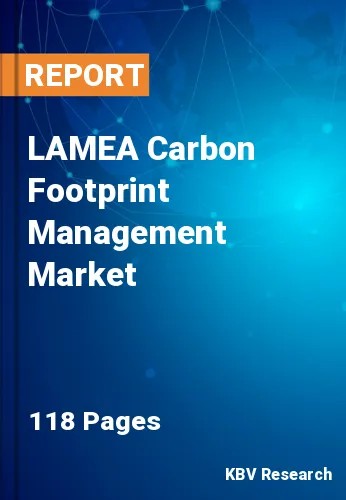The Latin America, Middle East and Africa Carbon Footprint Management Market would witness market growth of 23.2% CAGR during the forecast period (2023-2029).
Carbon taxes are one more tool for reducing GHG emissions. Because players in the building industry are already familiar with the tax mechanism, carbon taxes are easier to implement, have relatively low administration costs, and are appealing to them. By using energy more wisely and choosing cleaner, alternative forms of energy, carbon taxes motivate businesses and consumers to minimize greenhouse gas emissions, spurring advancements in technology and business methods. The cumulative reduction in GHG emissions can be measured using the ETS and permits for emissions can either be given out for free or sold at auction. Due to the equal weights of energy supply and demand, an ETS can be particularly helpful in the building sector, encouraging the use of energy-efficient resources.
The increasing demand for footprint platforms from businesses and sectors that need carbon footprint management software to comply with carbon emission compliances is one of the main factors driving the market's growth. Industries are required to control their carbon emissions to some extent by the government and the restrictions it has placed on certain industries. As a result, there is an increase in demand for tools and software that deal with carbon emissions, which aids industries in keeping track of their entire raw material usage and carbon emissions.
In LAMEA, the demand is anticipated to grow significantly during the forecast period. It is because many regional nations are moving toward more environmentally friendly legislation and renewable energy. To lessen the carbon footprint, governments, and regulatory agencies have created laws and regulations. As a result, market leaders are anticipated to expand their product offerings. In addition, adopting policies aimed at lowering greenhouse gases makes it easier for organizations to report on the results and behaviors of their members. Hence, all these elements lead to a greater demand in the region, which in turn is accelerating the expansion of the regional market.
The Brazil market dominated the LAMEA Carbon Footprint Management Market by Country in 2022 and would continue to be a dominant market till 2029; thereby, achieving a market value of $610.9 Million by 2029. The Argentina market is exhibiting a CAGR of 23.9% during (2023 - 2029). Additionally, The UAE market would display a CAGR of 22.9% during (2023 - 2029).
Based on Deployment, the market is segmented into Cloud and On-premise. Based on Organization Size, the market is segmented into Corporates/Enterprises, Mid-Tier Enterprises and Small Businesses. Based on Component, the market is segmented into Solution and Services. Based on Vertical, the market is segmented into Manufacturing, Financial Services, IT & Telecom, Government, Energy & Utilities, Residential & Commercial Buildings and Others. Based on countries, the market is segmented into Brazil, Argentina, UAE, Saudi Arabia, South Africa, Nigeria, and Rest of LAMEA.
Free Valuable Insights: The Worldwide Carbon Footprint Management Market is Projected to reach USD 33.7 Billion by 2029, at a CAGR of 21%
The market research report covers the analysis of key stake holders of the market. Key companies profiled in the report include Schneider Electric SE, SAP SE, Salesforce, Inc., IBM Corporation, ENGIE, Intelex Technologies, ULC, IsoMetrix, Cority Software, Inc. (Thoma Bravo), Dakota Software Corporation and Locus Technologies.
By Deployment
By Organization Size
By Component
By Vertical
By Country
Our team of dedicated experts can provide you with attractive expansion opportunities for your business.

